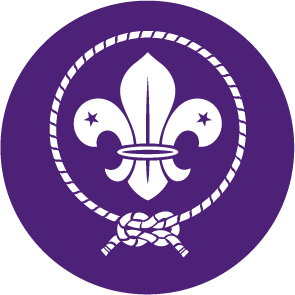Opening a Beaver meeting
Before you begin
- Use the safety checklist to help you plan and risk assess your activity. Additional help to carry out your risk assessment, including examples can be found here. Don’t forget to make sure all young people and adults involved in the activity know how to take part safely.
- Make sure you’ll have enough adult helpers. You may need some parents and carers to help if you’re short on helpers.
Having an opening is an important part of a meeting’s structure. There’s no right way to do open a meeting – whatever you do, an opening should welcome everyone and help them focus. It can get people ready to listen and join in.
Opening ceremonies can help everyone in the Beaver Colony bond. Lots of groups choose to Gather Logs to begin their meeting – but it’s not the only option. It’s up to you what you say and what else you do – why not ask the Beavers what they think?
Gather logs
- The person leading the opening should call out ‘Beavers, gather logs!’
- Everyone should get into a big circle around the leader and hold hands. They should leave plenty of space in the middle of the circle.
- The person leading the opening should call out ‘Build a dam!’
- Everyone should raise their joined hands. They should take five big steps into the middle of the circle, towards the person leading the opening. With each step, they should say one letter of the word ‘hello’ to spell it out.
- Once they’ve taken their fifth step and said ‘o’, everyone should let go of each other’s hands and wave to each other.
- The person leading the opening should reply ‘Hello Beaver Scouts!’
- Everyone should stay in the circle while the person leading the activities welcomes them and tells them what they’ll be doing in the meeting.
If you’ve a smaller group or less space in your meeting place, you could stomp your feet five times or step in and back out again, instead of taking five steps into the middle of the circle.
Reflection
Young people could take it in turns to lead the meeting opening – it doesn’t have to be a grown up calling out the words.
Having a way to open a meeting is a great chance for everyone to come together and think about what it means to be part of a Colony with friends, as well as being a local, national, and international citizen.
Everyone should get into pairs or groups of three, and talk about why Beaver Scouts have a meeting opening. How does it make them feel?
It might help people to feel connected to other Scout Groups or to their friends in Beavers. It can also be a chance to think about their Promise and how they’ll do their best at Beavers today.
Safety
All activities must be safely managed. You must complete a thorough risk assessment and take appropriate steps to reduce risk. Use the safety checklist to help you plan and risk assess your activity. Always get approval for the activity, and have suitable supervision and an InTouch process.
- Contact games and activities
Make sure everyone understands what contact is acceptable, and monitor contact throughout the activity.
- It’s up to you what word you spell – some people spell out ‘Beavers’ or the name of their Group. Other people choose to use a song or a flag to open their meetings.
- Use British Sign Language or Makaton if you need to.
- No one has to hold hands if they don’t want to, they can still be part of the circle.
- You can change how loudly you say things, too. People could whisper the letters of the word if anyone doesn’t like a lot of noise.
All Scout activities should be inclusive and accessible.
Design your own meeting opening that’s unique to your Colony.
Young people could take it in turns to lead the opening – it doesn’t have to be an adult calling out the words.

